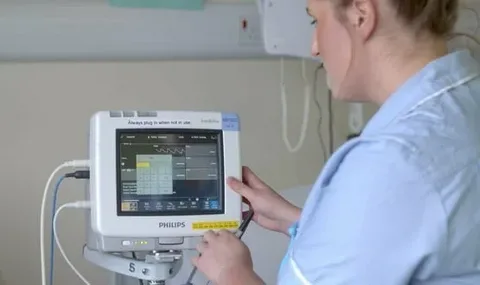In today's world, technology plays a crucial role in improving healthcare services. One such advancement is the Patient Monitoring System. This system allows healthcare professionals to keep track of a patient's vital signs and other important health information. It ensures timely interventions and better patient outcomes. Let's explore what a Patient Monitoring System is, how it works, its benefits, and its importance in modern healthcare.
A Patient Monitoring System is a tool used by healthcare providers to monitor patients' health in real-time. It consists of various devices that collect data such as heart rate, blood pressure, temperature, and oxygen levels. These devices are connected to a central monitoring unit where healthcare professionals can view and analyze the data.
The main purpose of a Patient Monitoring System is to detect any changes in a patient's condition early on. For example, if a patient's heart rate suddenly increases or their oxygen levels drop, the system will alert the healthcare team immediately. This allows them to take prompt action and provide the necessary care to the patient.
There are several types of Patient Monitoring Systems available, ranging from simple bedside monitors to more advanced systems used in intensive care units. Some systems can also be used remotely, allowing healthcare providers to monitor patients from a different location.
One of the key benefits of a Patient Monitoring System is improved patient safety. By continuously monitoring vital signs, healthcare providers can identify and address any issues before they escalate. This reduces the risk of complications and improves patient outcomes.
Additionally, Patient Monitoring Systems can increase efficiency in healthcare settings. Instead of manually checking each patient's vital signs periodically, healthcare providers can rely on the system to provide real-time data. This frees up time for other important tasks and allows healthcare professionals to focus on providing quality care.
Moreover, Patient Monitoring Systems can help reduce healthcare costs in the long run. By preventing complications and reducing the length of hospital stays, these systems can lower overall healthcare expenses for both patients and healthcare facilities.
In conclusion, Patient Monitoring Systems are invaluable tools in modern healthcare. They provide real-time data on patients' vital signs, allowing healthcare providers to detect and address any changes in their condition promptly. This leads to improved patient safety, better outcomes, increased efficiency, and reduced healthcare costs. As technology continues to advance, Patient Monitoring Systems will undoubtedly play an even greater role in enhancing healthcare delivery worldwide.


No comments yet